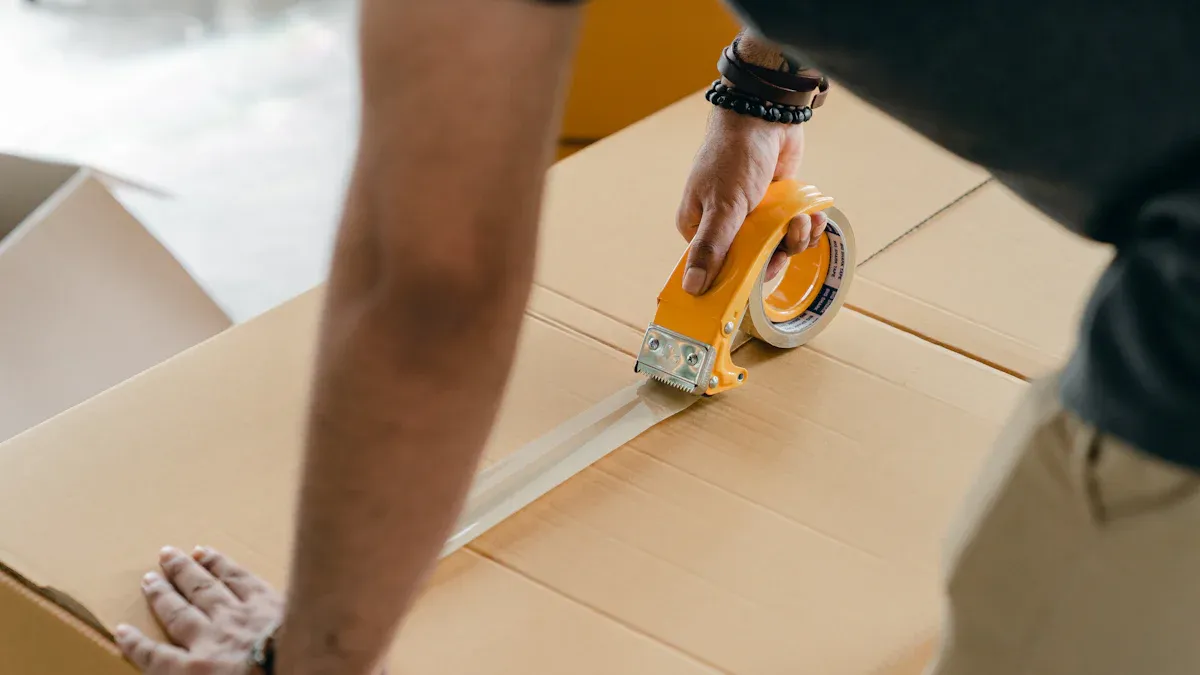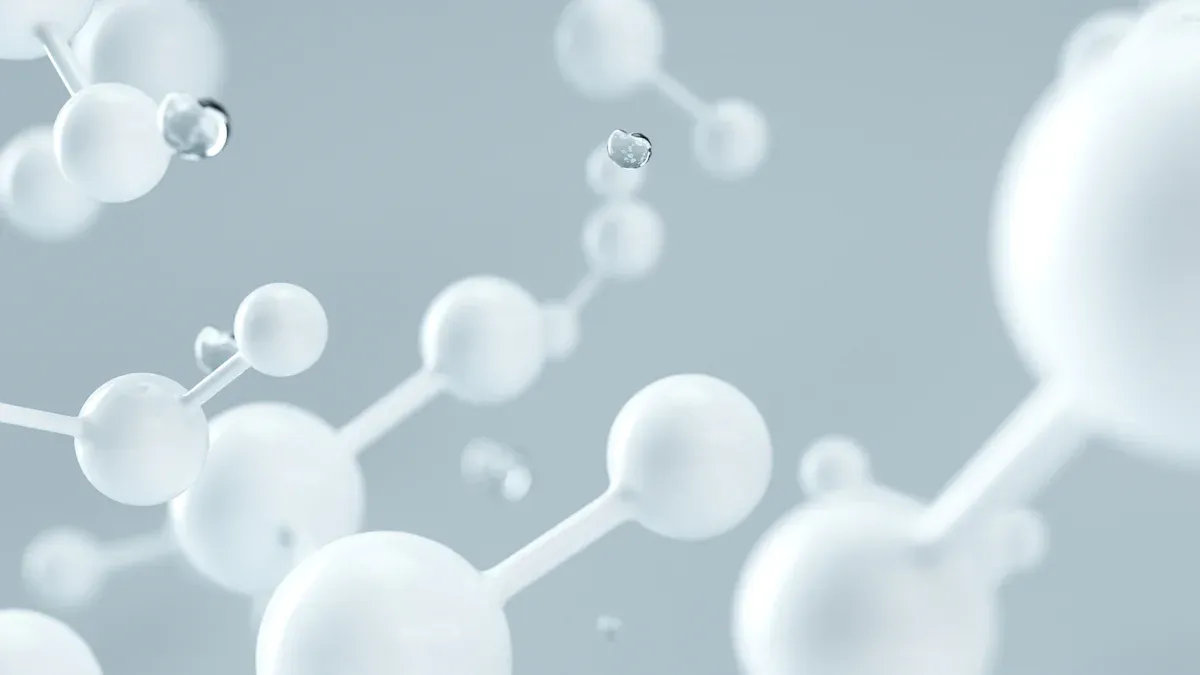

Industrial Adhesive Compounds are changing how buildings are made. More architects and engineers use adhesives now. They pick adhesives instead of nails or screws. This change lets people try new materials. It also helps make buildings look cleaner. If you work in construction, you should know about these changes. Learning about them helps you make better choices.
Industrial Adhesive Compounds in Construction

Evolution of Bonding Methods
Construction sites look different now. Builders used nails, screws, and bolts before. Today, teams use Industrial Adhesive Compounds more often. These adhesives join materials without making marks or holes. You can use epoxy systems to connect wood, metal, or glass. Epoxy systems make strong bonds and resist chemicals. These adhesives last a long time, even in bad weather.
Composite bonding is a big change too. You can join metal and plastic with special adhesives. This way, buildings are lighter and stronger. You do not worry about rust or weak spots. Industrial Adhesive Compounds help you work faster and keep things clean. You can make new designs that were not possible before.
Tip: Using adhesives means you do not drill holes or damage surfaces. This keeps materials strong and looking nice.
Key Drivers for Adoption
Builders pick adhesives for many reasons. One reason is speed. You can use adhesives fast and finish work sooner. This saves time and money. Another reason is safety. Industrial Adhesive Compounds do not need heat or heavy tools. You can work safely and avoid getting hurt.
Adhesives help meet new building rules. Many projects need materials that resist chemicals. Industrial Adhesive Compounds give this protection. You can use them where water, chemicals, or heat might cause trouble. Builders like adhesives because they work with many materials. You can use bonding solutions for wood, concrete, glass, and more.
Green building is popular now. Adhesives help you use recycled materials and make less waste. You can build strong and safe places while helping the environment.
Technology Advances
High-Performance Formulations
New high-performance adhesives are changing building methods. These adhesives make strong bonds that last a long time. Many use special chemistry to work better. Epoxy systems can hold heavy things without breaking. They also protect against chemicals and bad weather. You do not need to worry about spills or storms. Some adhesives join metal and glass together and stay strong. Composite bonding lets you build lighter but tough structures. These adhesives help keep your projects safe and sturdy.
Tip: High-performance adhesives mean you use fewer fasteners. This helps your work look neat and modern.
Eco-Friendly Solutions
Builders want to help the environment when they work. Many companies now make adhesives with less harmful stuff. These eco-friendly adhesives help meet green building rules. Water-based adhesives have less smell and are safer. Some products use recycled or natural materials. This helps cut down on waste and pollution. Industrial Adhesive Compounds now give strong results and help the planet. You do not lose safety when you pick eco-friendly options. The right adhesive helps make a better future for everyone.
Versatility and Material Compatibility
Bonding Diverse Materials


Adhesives can join many building materials. Industrial Adhesive Compounds work with concrete, wood, plastics, metal, glass, and composites. You do not have to match materials exactly. Epoxy systems bond metal to glass or wood to plastic. Composite bonding makes strong connections between different surfaces. The right bonding solutions give chemical resistance. This helps your project stand up to water, heat, and chemicals. You can build safer and longer-lasting structures.
Tip: Use adhesives when you need to join materials that nails or screws cannot hold well. You will get better results and fewer problems.
Adhesives work for many jobs. You can fix tiles, attach panels, or join beams. You do not need heavy tools or to make holes. This keeps your materials strong and clean. You save time and make your work easier.
Seamless Design Possibilities
Adhesives help you make smooth and modern designs. You do not see nails, screws, or bolts on the surface. Your building looks clean and neat. Bonding solutions hide joints and seams. This gives you more freedom to design creative spaces.
Architects like adhesives because they allow new shapes and styles. You can use glass walls or metal panels without showing fasteners. Epoxy systems and composite bonding make these ideas possible. You get strong connections and a better look. Chemical resistance helps your designs last longer, even in tough conditions.
Note: Seamless designs make buildings safer and easier to clean. You also get a more professional finish.
Applications
Structural Uses
Industrial Adhesive Compounds help make strong buildings. You can join steel beams, concrete panels, and glass walls. Epoxy systems create tough bonds that hold heavy things. These bonds protect against rain, heat, and chemicals. Composite bonding connects metal and plastic without weak spots. You can build bridges, towers, and big buildings that are safer.
Tip: Use bonding solutions where bolts or welds might break. You will see fewer cracks and your work will last longer.
Interior and Exterior Installations
Adhesives work for many jobs inside and outside. Bonding solutions attach tiles, panels, and floors without nails. You get smooth walls and floors that look nice. Epoxy systems help with glass doors and metal frames. You can fix signs, railings, and decorations outside. Chemical resistance keeps these safe from weather and spills. You save time because you do not need to drill or use heavy tools.
- Use adhesives for:
- Wall panels
- Ceiling tiles
- Window frames
- Outdoor signs
Note: Seamless installations make cleaning easy and help buildings look modern.
Prefabrication and Modular Systems
Prefabrication and modular systems help you build faster. Industrial Adhesive Compounds join parts in a factory before moving them. Composite bonding connects wood, metal, and plastic pieces. You get strong modules that fit together well. Epoxy systems keep each part in place during transport. Bonding solutions help finish projects quickly and cut down on waste. You can change designs or fix mistakes without starting over.
Alert: Prefabricated buildings need strong adhesives for shipping and setup. Pick the right bonding solutions for each material.
Benefits
Strength and Durability
Buildings should last for many years. Industrial Adhesive Compounds help make this happen. These adhesives create strong bonds that hold heavy things. Epoxy systems add extra strength to steel beams and glass panels. You see fewer cracks and breaks with bonding solutions. Composite bonding joins different materials without weak spots. Chemical resistance keeps your work safe from water, heat, and harsh chemicals.
For example, builders use epoxy systems to connect bridge parts. These bridges can handle storms and lots of cars. Bonding solutions keep walls and floors safe in schools and hospitals.
Tip: Strong adhesives help you avoid repairs and keep buildings safe for a long time.
Flexibility and Efficiency
You want to finish projects fast and change designs if needed. Adhesives give you this flexibility. Bonding solutions join wood, metal, and plastic. You do not need to drill holes or use heavy tools. This saves time and effort. Composite bonding lets you fix mistakes or change layouts without starting over.
Work on construction sites is more efficient now. Teams use adhesives to put up panels and tiles faster. You can build modular homes and offices in less time. Epoxy systems help you move parts safely and set them up easily.
- Benefits of using adhesives for efficiency:
- Faster installation
- Easier repairs
- Less waste
- Lower labor costs
Note: Flexible adhesives help you finish on time and handle design changes.
Sustainability Impact
Caring for the environment is important. Industrial Adhesive Compounds help with green building. Many adhesives use water-based formulas or recycled materials. You make less waste because you do not need to cut or drill as much. Chemical resistance means buildings last longer and need fewer repairs.
Builders use bonding solutions to attach recycled panels and eco-friendly insulation. Composite bonding helps you reuse materials and make less landfill waste. Epoxy systems keep structures strong, so you do not replace parts often.
For example, schools and offices use adhesives to install solar panels. These panels stay in place and help save energy.
Alert: Picking the right adhesive helps you protect the planet and build a better future.
Types of Industrial Adhesives
Epoxy
Epoxy is one of the strongest adhesives you can pick. Many builders use epoxy systems in construction. These adhesives make tough bonds that last a long time. Epoxy works with metal, glass, wood, and concrete. You can trust epoxy for jobs needing high strength. It also gives good chemical resistance. Epoxy helps join heavy beams or panels together. You can use it for bridges, floors, and walls. Epoxy resists water and heat, so your work stays strong.
Tip: Pick epoxy systems for tough jobs or when you want to avoid weak spots.
Polyurethane
Polyurethane adhesives are flexible and strong. You can use them for composite bonding. They work well for joining materials that move or bend. Polyurethane sticks to wood, metal, and plastics. These adhesives handle vibration and impact. You can use them for floors, roofs, and outdoor signs. Polyurethane gives good chemical resistance. This helps your projects stand up to weather and spills.
- Benefits of polyurethane adhesives:
- Flexible bonds
- Strong outdoors
- Good for composite bonding
Acrylic
Acrylic adhesives help you bond many materials fast. You can use them for glass, metal, and plastics. Acrylic cures quickly, so you finish jobs sooner. These adhesives resist chemicals and UV light. This makes them good for outdoor projects. You can use acrylic for signs, panels, and decorations. Acrylic adhesives help you make seamless designs without showing fasteners.
Note: Acrylic adhesives are great when you need speed and chemical resistance.
Silicone
Silicone adhesives give strong bonds and great flexibility. You can use them for glass, metal, and ceramics. Silicone works well in places with lots of heat or moisture. You see silicone in bathrooms, kitchens, and outside walls. These adhesives resist chemicals and weather. Your work stays safe and clean. Silicone helps seal joints and stops leaks.
- Use silicone adhesives for:
- Sealing windows
- Joining tiles
- Waterproofing surfaces
Alert: Silicone adhesives protect your building from water and heat. They also help keep a neat finish.
Challenges
Environmental and Health Concerns
You must be careful when using Industrial Adhesive Compounds. Some adhesives have strong smells or release chemicals into the air. These can make it hard to breathe or cause skin problems. Epoxy systems sometimes have things that are bad for your health. You should wear gloves so you do not touch them. Always read safety labels before starting your work.
Many bonding solutions now use water-based formulas. These lower the chance of breathing in bad fumes. You can choose adhesives with less chemical resistance for a safer place. Composite bonding can use eco-friendly choices too. If you work inside, make sure there is fresh air.
Tip: Wear gloves and masks when using adhesives. Open windows or use fans to keep the air clean.
Compliance and Standards
You have to follow rules when using Industrial Adhesive Compounds. Building codes say which adhesives are okay for each job. Some projects need bonding solutions with high chemical resistance. Others need epoxy systems that pass fire tests. Check the standards before you buy anything.
If you use the wrong adhesive, your building might not pass inspection. You could get fined or have to wait longer. Composite bonding must meet strength and safety rules. Always ask your supplier for test reports and certifications.
- Steps to stay compliant:
- Read local building codes.
- Pick adhesives with the right certifications.
- Keep records of products you use.
Alert: Using approved adhesives helps you avoid trouble and keeps your project safe.
Application Best Practices
You get better results if you use adhesives the right way. Clean surfaces before you use bonding solutions. Dust and oil can make the bond weak. Follow the instructions for mixing epoxy systems. Some adhesives need exact amounts to work well.
Composite bonding works best if you press materials together for the right time. Do not rush the drying process. If you use adhesives outside, check the weather first. Rain or cold can change how adhesives dry.
Note: Good application practices help your building last longer and look better.
Future Trends
Emerging Technologies
New technology is changing how adhesives are used in building. Smart adhesives can sense stress and temperature changes. These products help you find problems early. Some bonding solutions use nanotechnology for stronger, lighter connections. You can use less material but still keep things strong. Epoxy systems cure faster now and work in cold or wet places. You can finish projects even when the weather is bad. Composite bonding lets you join new materials like carbon fiber and advanced plastics. These materials help buildings last longer and resist damage.
Tip: Look for new adhesives with better chemical resistance. These products help buildings stay safe in tough places.
Integration with Digital Construction
Digital tools help you plan and use adhesives better. You can use software to test bonding solutions before building. This helps you pick the best adhesive for each job. Some programs show how epoxy systems work under stress. You avoid mistakes and save time. You can track composite bonding in modular designs. Digital construction lets you share plans and make changes quickly. You see fewer errors and finish projects faster.
- Benefits of digital integration:
- Better planning
- Faster problem solving
- Improved safety
Industrial Adhesive Compounds now work with smart sensors and machines. Robots can apply adhesives for more accuracy. This technology helps you build safer and more modern buildings.
Industrial Adhesive Compounds let you make buildings stronger and smarter. You can use epoxy systems and composite bonding with many materials. These bonding solutions give you more ways to design and protect against chemicals. When you plan your next project, think about how adhesives help with safety and speed. New advances will keep changing the way you build. Stay interested and be ready to use these helpful tools.

